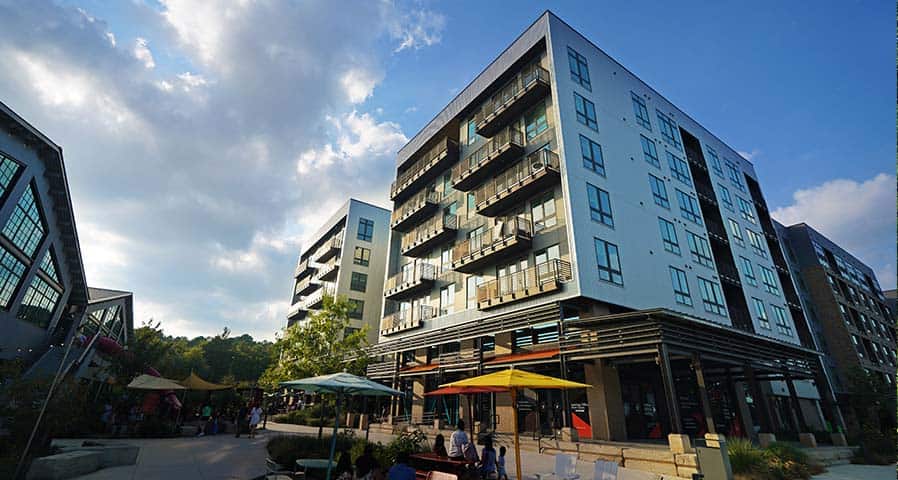When it comes to new commercial construction, lighting design is more than just selecting fixtures and layouts. For builders, architects, and facility owners, the PowerMoves new construction lighting rebate program offers a chance to make smarter design choices, cut long-term operating costs, and secure meaningful financial incentives upfront. The key is to integrate these rebates into the project from the very beginning rather than treating them as an afterthought once construction is complete.
Understanding the PowerMoves Lighting Rebate Structure
The PowerMoves Commercial & Industrial (C&I) program is designed by Wabash Valley Power Alliance and participating electric cooperatives to encourage energy efficiency in both retrofit and new construction projects. For new buildings, the program provides lighting rebates under its New Construction Program, where rebate eligibility is determined by meeting lighting power density (LPD) thresholds and other qualifying criteria.
Unlike prescriptive retrofit projects, which offer fixed per-fixture rebates, new construction incentives are tied to the overall efficiency of the lighting design. The maximum rebate for prescriptive new construction lighting is capped at $25,000 per building, with pre-approval required before project installation begins.
How Lighting Power Density (LPD) Is Calculated
Lighting power density is the core metric used to determine rebate eligibility. LPD measures the total wattage of installed lighting fixtures per square foot of building space. By designing a project that achieves a lower LPD than the baseline set by program guidelines, builders and architects can earn rebates for every square foot of energy-efficient design.
For example, if the baseline LPD for a specific building type is 1.0 watts per square foot, and the final design comes in at 0.75 watts per square foot, the project earns rebates for achieving improved efficiency.
What Qualifies Under the New Construction Lighting Program
To qualify, projects must be:
- New commercial construction or major additions
- Gut rehabs or change-of-use projects where lighting systems are being fully redesigned
- Designed with equipment that meets DesignLights Consortium (DLC) standards or ENERGY STAR qualifications
Eligible lighting includes interior fixtures, exterior luminaires, troffers, high-bay systems, LED tubes, and networked lighting controls. Exit signs, occupancy sensors, and daylighting controls can also contribute to efficiency gains and rebates when incorporated into the design.
Importantly, rebates are based on installed lighting that reduces energy consumption compared to baseline standards, not simply on fixture replacement counts.
Maximize the value of your new construction project with expert rebate guidance.
Explore Our Process to see how we simplify qualification, application, and rebate recovery for PowerMoves and other commercial incentive programs. Then, schedule a call with our experts to start maximizing your savings today.
The Most Lucrative Lighting Rebates
Within the PowerMoves program, certain lighting measures stand out as especially lucrative for new construction projects. By working with Incentive Rebate360, builders, architects, and facility owners can ensure these rebates are maximized and seamlessly integrated into the project budget.
Top rebate opportunities include:
- High-Bay LED Fixtures – Rebates range from $50 to $125 per fixture, depending on wattage replaced (for example, replacing a 400W HID with an LED high-bay fixture earns $125). These are especially valuable in warehouses, gyms, and industrial facilities.
- Troffer Fixtures – Rebates of $40–$50 per LED troffer fixture (2×2, 2×4, or 1×4) provide strong returns in schools, offices, and retail spaces where troffers dominate the ceiling layout.
- Networked Lighting Controls – Earn $0.20 per square foot for integrating advanced control systems. On a 50,000-square-foot building, this can mean an additional $10,000 in rebates layered on top of fixture incentives.
- Exterior and Parking Lot LEDs – Pole-mounted luminaires earn between $35 and $250 per fixture, depending on lumen output. For example, replacing a 1,000W HID with a high-efficiency LED can qualify for a $180–$250 rebate.
- Exit Signs and Occupancy Sensors – Smaller items that add up quickly: $6 per LED exit sign, $20–$30 per occupancy sensor, and $20–$30 per luminaire-level control. In a large facility with dozens of devices, these incremental rebates can significantly reduce costs.
Incentive Rebate360 helps streamline the rebate recovery process by handling pre-approvals, paperwork, and direct coordination with the PowerMoves program. Their expertise ensures that all eligible rebates are captured and applied efficiently, freeing project teams to focus on design and construction.
Best Practices for Maximizing Rebates in New Construction
To capture the full financial and operational value of lighting rebates, professionals should:
- Engage Early in Design
Contact a PowerMoves energy engineer during the planning stage. Pre-approval is required, and early collaboration ensures rebate-eligible products and layouts are baked into construction documents.
- Optimize Lighting Layouts
Instead of defaulting to one-for-one fixture placement, explore modern layouts with high-efficiency LEDs, daylight harvesting, and controls that reduce overall wattage per square foot.
- Leverage Controls Strategically
Adding occupancy sensors, daylighting controls, or networked systems not only reduces energy use but also increases rebate potential under the program’s qualified equipment list.
- Bundle Incentives with Other Systems
Rebates are available for upgrades other than lighting. Incentives can be bundled with HVAC and VFD to achieve energy efficiency throughout the entire building. Coordinating multiple measures in a single new construction project can maximize total incentive dollars.
- Plan for Documentation
Invoices, specification sheets, and model numbers must be provided during the application process. Keeping track of this documentation from the beginning helps ensure a smooth rebate approval process.
Why Builders and Architects Should Lead with Rebates
Too often, lighting incentives are considered after construction, leaving money on the table and locking a building into less efficient systems. By prioritizing rebates in the design phase, builders and architects not only lower upfront costs for their clients but also create long-term energy savings. This approach positions facility owners for stronger ESG performance and a competitive operating advantage.
Conclusion
The PowerMoves new construction lighting rebate program is an opportunity for builders, architects, and facility owners to design smarter, more efficient buildings while capturing significant financial incentives. By focusing on lighting power density, choosing qualifying equipment, and planning for rebates from day one, professionals can transform lighting design into a strategic advantage.
Navigating the application process, pre-approval requirements, and technical specifications can be time-consuming. Incentive Rebate360 works directly with co-ops, engineers, and contractors to streamline approvals and integrate incentives into project budgets. To contact us, call 480-653-8180, email [email protected], or schedule a call that fits your needs by clicking the button below!






0 Comments